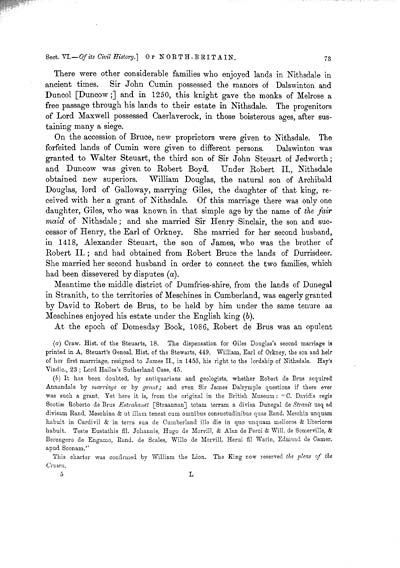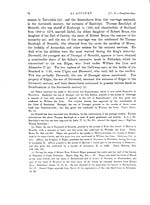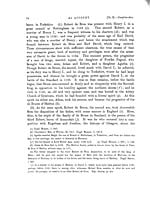Volume 5
(79) Page 73
Download files
Individual page:
Thumbnail gallery: Grid view | List view

73 There were other considerable families who enjoyed lands in Nithsdale in ancient times. Sir John Cumin possessed the manors of Dalswinton and Duncol [Duncow;] and in 1250, this knight gave the monks of Melrose a free passage through his lands to their estate in Nithsdale. The progenitors of Lord Maxwell possessed Caerlaverock, in those boisterous ages, after sus- taining many a siege. On the accession of Bruce, new proprietors were given to Nithsdale. The forfeited lands of Cumin were given to different persons. Dalswinton was granted to Walter Steuart, the third son of Sir John Steuart of Jedworth; and Duncow was given to Robert Boyd. Under Robert II., Nithsdale obtained new superiors. William Douglas, the natural son of Archibald Douglas, lord of Galloway, marrying Giles, the daughter of that king, re- ceived with her a grant of Nithsdale. Of this marriage there was only one daughter, Giles, who was known in that simple age by the name of the fair maid of Nithsdale; and she married Sir Henry Sinclair, the son and suc- cessor of Henry, the Earl of Orkney. She married for her second husband, in 1418, Alexander Steuart, the son of James, who was the brother of Robert II.; and had obtained from Robert Bruce the lands of Durrisdeer. She married her second husband in order to connect the two families, which had been dissevered by disputes (a). Meantime the middle district of Dumfries-shire, from the lands of Dunegal in Stranith, to the territories of Meschines in Cumberland, was eagerly granted by David to Robert de Brus, to be held by him under the same tenure as Meschines enjoyed his estate under the English king (6). At the epoch of Domesday Book, 1086, Robert de Brus was an opulent (a) Craw. Hist, of the Steuarts, 18. The dispensation for Giles Douglas's second marriage is printed in A. Steuart's Geneal. Hist. of the Stewarts, 449. William, Earl of Orkney, the son and heir of her first marrriage, resigned to James II., in 1455, his right to the lordship of Nithsdale. Hay's Vindic., 23 ; Lord Hailes's Sutherland Case, 45. (b) It has been doubted, by antiquarians and geologists, whether Robert de Brus acquired Annandale by marriage or by grant; and even Sir James Dalrymple questions if there ever was such a grant. Yet here it is, from the original in the British Museum : " C. Davidis regis Scoti� Roberto de Brus Estrahanet [Straannan] totam terram a divisa Dunegal de Stranit usq ad divisam Band. Meschina & ut illam teneat cum omnibus consuetudinibus quas Rand. Meschin unquam habuit in Cardivil & in terra sua de Cumberland illo die in quo unquam melioros & liberiores habuit. Teste Eustathis fil. Johannis, Hugo de Morvill, & Alan de Perci & Will, de Somerville, & Berengero de Engamo, Rand. de Scales, Willo de Morvill, Herui fil Warin, Edmund de Camer, apud Sconam." This charter was confirmed by William the Lion. The King now reserved the pleas of the Crown. 5 L
Set display mode to:
![]() Universal Viewer |
Universal Viewer | ![]() Mirador |
Large image | Transcription
Mirador |
Large image | Transcription
Images and transcriptions on this page, including medium image downloads, may be used under the Creative Commons Attribution 4.0 International Licence unless otherwise stated. ![]()
| Caledonia, or, An account, historical and topographic of North Britain from the most ancient to the present times > Volume 5 > (79) Page 73 |
|---|
| Permanent URL | https://digital.nls.uk/74530282 |
|---|---|
| Description | Vol. V. |
|---|---|
| Attribution and copyright: |
|

